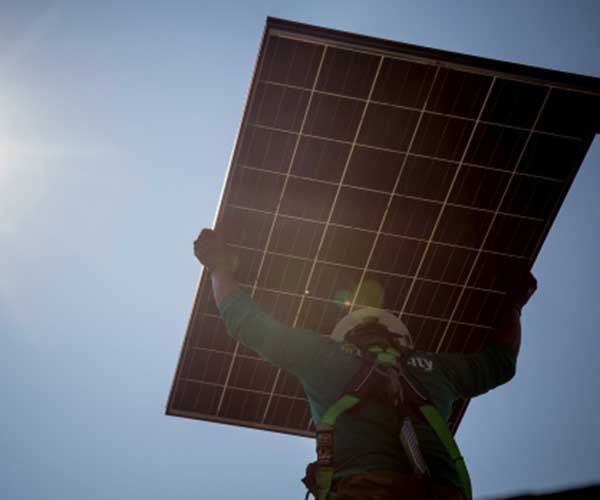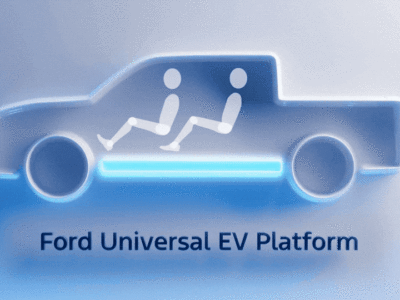- The five projects include Amazon’s first renewable energy project in China, second in Australia, second and third in Ohio, and 12th in the Commonwealth of Virginia, with a combined 615 MW of additional renewable capacity and an expected generation of 1.2 million MWh of energy annually, or enough to power 113,000 average U.S. homes.
- Projects will supply renewable energy to the fulfillment centers and AWS data centers that support millions of customers globally.
- Globally, Amazon has 91 renewable energy projects that have the capacity to generate over 2,900 MW and deliver more than 7.6 million MWh of energy annually.
Washington — Amazon announced five new renewable energy projects in China, Australia, and the U.S that further support Amazon’s commitment to reach 80% renewable energy by 2024 and 100% renewable energy by 2030 (and potentially as early as 2025), as well as to reach net-zero carbon by 2040.
Amazon’s first renewable energy project in China is a 100 megawatt (MW) solar project in Shandong. Once complete, the project is expected to generate 128,000-megawatt hours (MWh) of clean energy annually.
Amazon’s second renewable energy project in Australia is a 105 MW solar project in New South Wales. This project will have the capacity to generate 250,000 MWh of clean energy each year, which is enough to power the equivalent of 40,000 average Australian homes.
Amazon’s newest renewable energy projects in the U.S. include two new projects in Ohio, a 200 MW solar project and an 80 MW solar project. Additionally, a new 130 MW solar project in Virginia brings the total number of renewable energy projects in the Commonwealth to 12. Once enabled, these three U.S.-based projects have the capacity to power the equivalent of 69,000 average U.S. homes each year.
When complete, the five new Amazon renewable energy projects totaling 615 MW of installed capacity will supply approximately 1.2 million MWh of additional renewable energy to the company’s fulfillment network and Amazon Web Services (AWS) data centers, which power Amazon and millions of customers globally.
To date, Amazon has announced 31 utility-scale wind and solar renewable energy projects and 60 solar rooftops on fulfillment centers and sort centers around the globe. Together, these projects totaling over 2,900 MW of capacity will deliver more than 7.6 million MWh of renewable energy annually, enough to power 680,000 U.S. homes.
“As a signatory to The Climate Pledge, we’re committed to meeting the goals of the Paris Agreement 10 years early and reaching net zero carbon across Amazon by 2040,” said Kara Hurst, Vice President of Sustainability, Amazon. “These five new renewable energy projects are a critical part of our roadmap to reach this goal. In fact, we believe it is possible to reach 100% renewable energy by 2025, five years ahead of the goals we announced last fall. While this will be challenging, we have a credible plan to get there.”
“Virginia’s energy future is bright. Through investments in clean energy we can reduce carbon emissions and create jobs to help drive long-term economic development,” said Virginia Senator Jennifer L. McClellan. “The announcement of this new Amazon solar project helps the Commonwealth meet our climate goals and contributes to our economic growth. The Virginia Clean Economy Act will help to drive more clean energy investments like this, to make Virginia a national hub for clean energy jobs.”
“Clean energy job creation is a crucial driver for long-term economic development in the Commonwealth,” said Virginia Delegate Richard C. Sullivan Jr. “I am pleased that Amazon continues to invest in Virginia’s clean energy future. The Virginia Clean Economy Act has put us on a path to 100 percent clean energy, and companies like Amazon are critical to helping us achieve that goal.”
Visit Amazon’s sustainability website for information and sustainability metrics that share the progress the company is making towards reaching The Climate Pledge. The goals, commitments, investments, and programs build on Amazon’s long-term commitment to sustainability through existing innovative programs, including Shipment Zero – Amazon’s vision to make all shipments net zero carbon, with 50% net zero carbon by 2030; sustainable packaging initiatives like Frustration-Free Packaging and Ship in Own Container, which have reduced packaging waste by 25% since 2015; renewable energy programs; investments in the circular economy with the Closed Loop Fund; and numerous other initiatives happening every day and led by teams across Amazon.












Comments